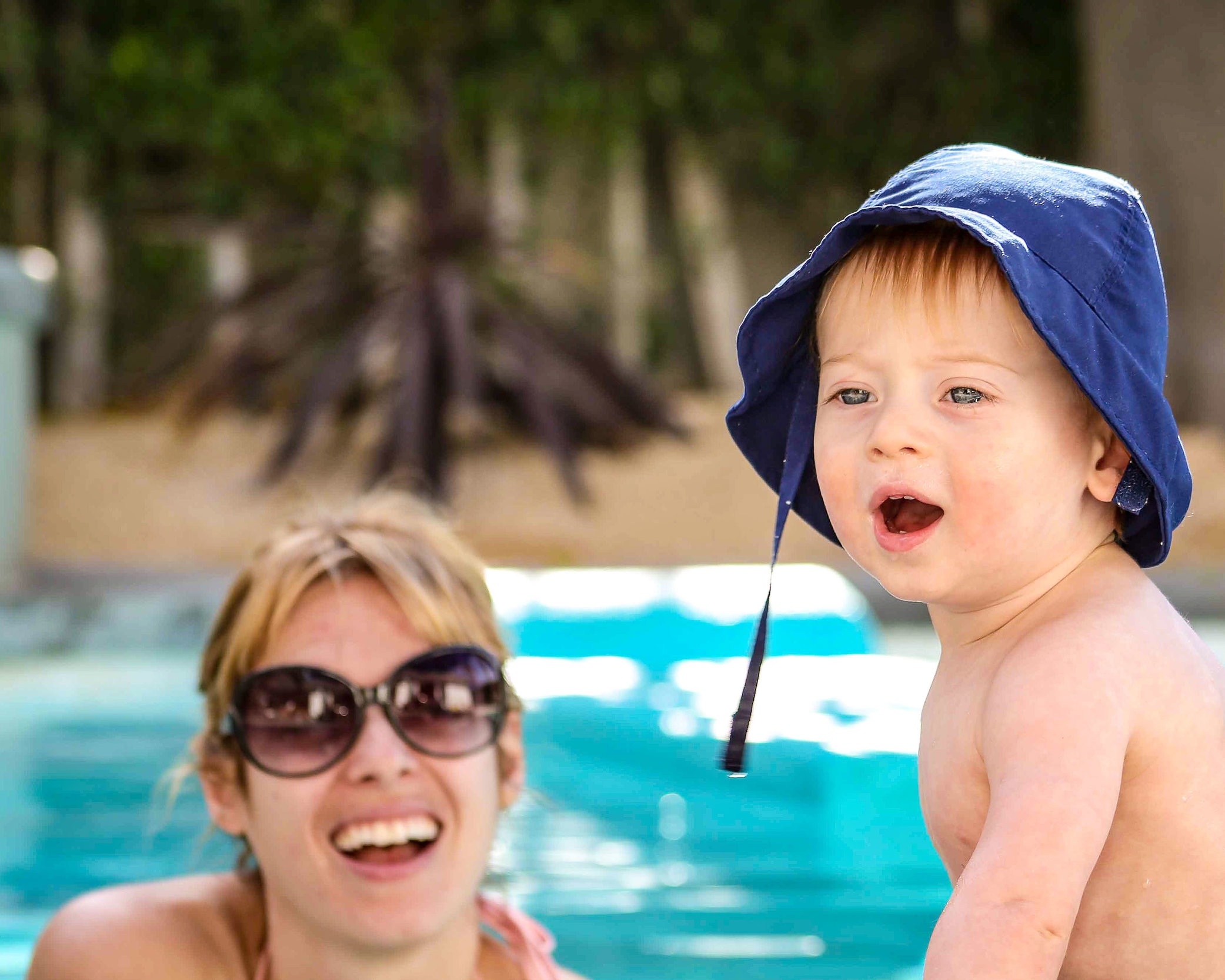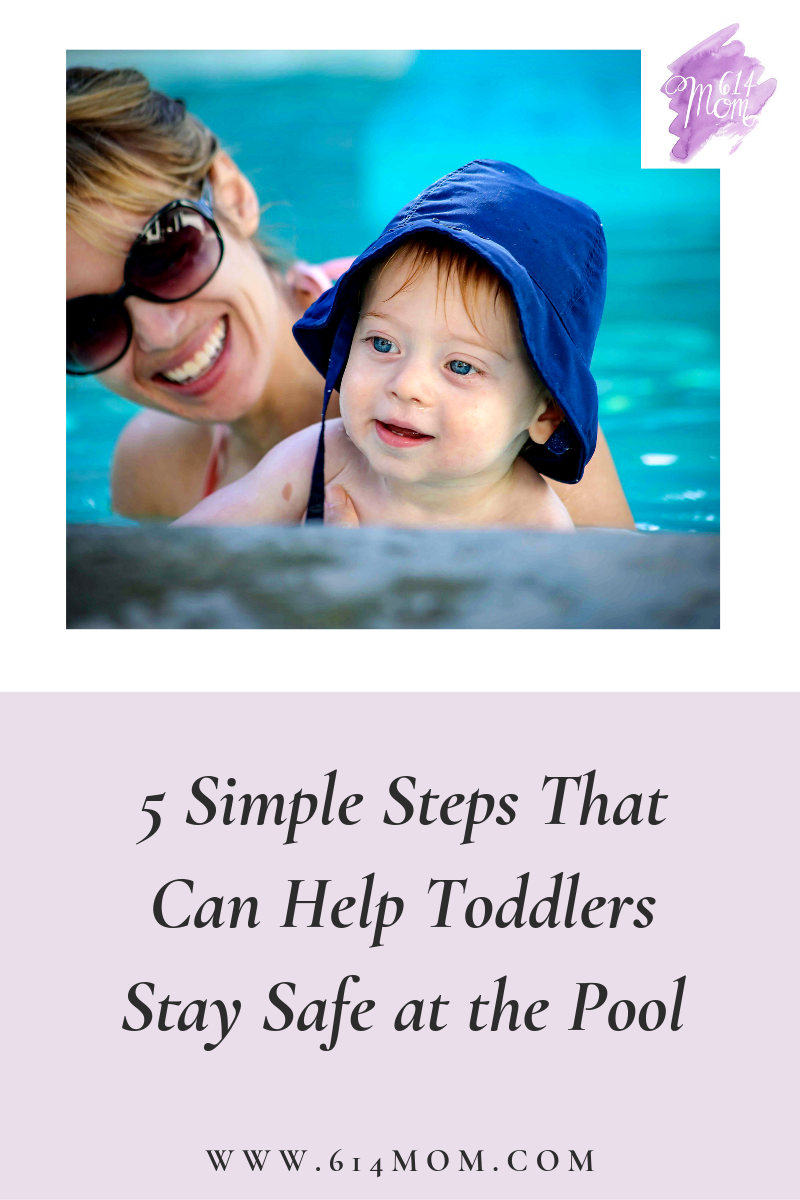Simple Steps Can Help Toddlers Stay Safe at the Pool
May is National Water Safety and Drowning Prevention Awareness Month. In support of this issue, local children’s book company, Books with Purpose, and Aqua-Tots Swim School locations in Powell Westerville, and Cleveland have partnered to help educate parents on important actions they can take to increase their child’s safety in and around the water.
I’ve invited guest blogger Lauren Kelley, co-founder of Books with Purpose, to tell us more:
Thank you, Eryn, for the opportunity to share information about water safety. Every parent wants to protect their children from potential dangers. And yet, we’ve learned that many parents are unaware of the alarming statistics surrounding drowning and water-related injuries in the United States - especially for toddlers. It’s difficult to think about, but important to know that:
Each year, about 4,000 people drown in the U.S. The highest drowning rates are seen in children ages 1 to 4. Drowning is responsible for more deaths among children 1 to 4 than anything else except birth defects. 1,2
In this age range, most drownings occur in home swimming pools.2
For every child who dies from drowning, another five receive emergency department care for nonfatal submersion injuries.1
A child who survives drowning may suffer brain damage or other lasting consequences.
National Water Safety and Drowning Prevention Awareness Month is an educational initiative that acknowledges that there is more that can be done in our country to keep kids safe around water, especially toddler-aged children.
As a former swimmer, lifeguard, and swim instructor (and mom of three kids under the age of six, including two toddlers), I’ve seen firsthand how quickly dangerous situations can arise around a swimming pool. To help early swimmers understand that water is something to enjoy, but also something to respect, Books with Purpose is releasing a new children’s book, Beckett Beaver Learns About Pool Safety. The book uses a simple “Do” and “Don’t” layout, teaching kids ground rules like not swimming alone, starting in the shallow end, and staying where the lifeguard/ your guardian can see you.
The new children’s book fills a void currently on the market for this high-risk age group and our hope is that it will be a useful tool for parents who are getting ready to go on vacation or are hoping to spend time with their little ones poolside this summer.
In addition our latest book, my partner and Books with Purpose co-founder, artist Emmy Mitchell (and mom of twin 5-year-old boys) and I reached out to Aqua-Tots Swim Schools, which is world’s largest swim school franchise with a trusted swim curriculum, to learn more about what all parents can do to support drowning prevention.
Mike Kallmeyer, owner of Aqua-Tots Swim Schools in central and northeast Ohio, explained to us that swim instruction with an emphasis on drowning prevention is vital for babies and toddlers because “accidents happen without life jackets.” If your child accidentally falls in the pool, you want him or her to be able to find the edge and climb out - or, if that’s not an option, to flip over and float, he said. Beyond swimming lessons, Kallmeyer encouraged parents to inform themselves about common pool dangers - including murky pool water, entrapment risks, and safety considerations specific to private pools to help avoid an emergency.
To that end, we hope that 614 Mom followers will take a moment to read and share these pool safety tips for parents of toddlers to help prepare for all the wonderful water activities your families may be enjoying this spring and summer:
Be A Prepared Parent. Being knowledgeable about common pool dangers can help avoid an emergency or prepare you for one if necessary.
Consider learning CPR and keeping your skills updated regularly. Understanding life-saving basics allows you to assist in a pool emergency if needed.
Don’t let your kids swim in murky water. Swimmers who have fallen beneath the surface cannot be seen in unclear water and drowning risk is increased. You should be able to see the bottom of the pool clearly at all times. If the water has become murky, report it to a lifeguard or pool owner immediately so the pool can be cleared.
Learn about entrapment. Faulty or broken drain covers can create powerful suction that can trap a child underwater. Teach children to stay away from pool drains, pipes, and other openings in pools and spas to avoid entrapment.
For private pools, ensure there is a four-foot or taller fence around the pool with self-closing and self-latching gates or a lockable safety cover on spas. Make sure older children understand they should never open the door for younger children, or prop open a gate which could leave toddlers at risk for entering the pool area unsupervised.
Keep Your Phone Poolside. Whether at a public or private pool, make sure there is a fully-charged phone nearby that you can use to call for help if needed. Never leave the pool area to answer a ringing phone when there are children in the water.
Start Swimming Lessons Early. When it comes to pool safety, learning to swim is a life-saving ability. Aqua-Tots Swim Schools offers year-round, indoor swim instruction for children as early as 4 months old. Lessons include drowning prevention skills like learning to find the edge of the pool, climbing out of the pool, and - if that’s not an option - how to flip on their backs to float, as well as proper breath control.
Create Safety-Smart Kids. Beyond swim lessons, parents can help increase safety in and around the water by teaching their kids pool safety basics at home. Books like Beckett Beaver Learns About Pool Safety teach toddlers important pool rules like entering feet first, staying in the shallow end, and never swimming alone.
Adult Supervision Always. Constant adult supervision is essential when kids are in or around water. One parent or caregiver, who is not under the influence of alcohol or drugs, should stay close, be alert, and watch children at all times at private and public pools. Don’t rely solely on lifeguards to ensure your child’s safety; likewise, water wings, puddle jumpers or life vests should never be a replacement for adult supervision. If a child is missing, look for him or her in the pool or spa first.
Follow us on Instagram for upcoming family Water Safety Presentations in your area.
Our best,
Lauren Kelley and Emmy Mitchell, Books with Purpose
References
1. Centers for Disease Control and Prevention, National Center for Injury Prevention and Control. Web-based Injury Statistics Query and Reporting System (WISQARS) [online]. [cited 2012 May 3]. Available from: URL: http://www.cdc.gov/injury/wisqars.
2. CDC. Wide-ranging online data for epidemiologic research (WONDER). Atlanta, GA: CDC, National Center for Health Statistics; 2016. Available at http://wonder.cdc.gov.
Additional Resources
American Red Cross
To find CPR classes in your area and other training services.
American Academy of Pediatrics
Helpful swim safety tips and other guidelines for parents.
Aqua-Tots Swim Schools
Nationwide leader in swimming instruction.
Backyard Lifeguards
A resource for private pool owners to find lifeguards to hire for private events and parties.
Books with Purpose
Children’s books with lessons of love, safety, and healthy habits. NEW children’s book, “Beckett Beaver Learns About Pool Safety,” teaches toddlers about staying safe at the pool.
National Drowning Prevention Alliance
Resources for parents on water safety steps, and how to add layers of protection around the water.
U.S. Consumer Product Safety Commission's Pool Safely
A national public education campaign to reduce drownings due to entrapment






